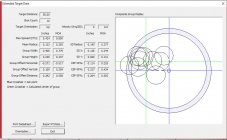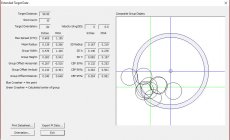Hornady basically duplicated Brian Litz' test and then claimed tuners don't work.
Both Litz and Hornady failed to follow the manufacturer's instruction on how to use the tuner.
Hornady ONLY tested using large movements of the tuner (full 360 degree revolutions) instead of making small incremental changes. Litz called his full revolutions "sweeps", while Hornady calls theirs +1 or +2 from baseline. Most tuners advise to make small incremental changes of 2 or 5 hashmarks, maybe 1/12 or 1/16 revolution at a time.
Hornady did not explain why they chose to only test full revolutions and NOT test smaller increments.
Rifles tested: 6Arc, 6.5 Cr, 556
41:35 min- 556 rifle... "On this first test I did 3 different tuner settings and I made pretty big movements of the tuner's adjustment: full revolutions of the indexing marks... full revolutions from baseline of zero..." +1 full revolution from baseline, then +2 full revolution from baseline.
"The test data that we have shows that across those three tests, the tuner did not make changes to the result outside of what would be expected just from test to test."
"...to get to the conclusion of, we've shot nearly a thousand rounds, and you can hang stuff on a barrel and it makes a difference, maybe, but the individual settings don't make a difference. Not from what we saw."
Additionally, a different problem with their test- "for the 556 test we used 55gr FMJ bulk ammo." Why would they use such poor quality ammo for ANY test? The regular (large) variances in velocity and accuracy likey overshadowed any pos/neg changes a tuner would make. Useless test.
Also, they did computer modeling using a 30 cal 24" barrel with a 16oz tuner on the muzzle. Again, literally nobody uses a 16oz muzzle device of any kind. They did not simulate any other reasonable and commonly used weights. Most tuners and brakes are between 2-6oz, nowhere near 16oz. Litz did the same thing testing up to 4lbs muzzle devices.













